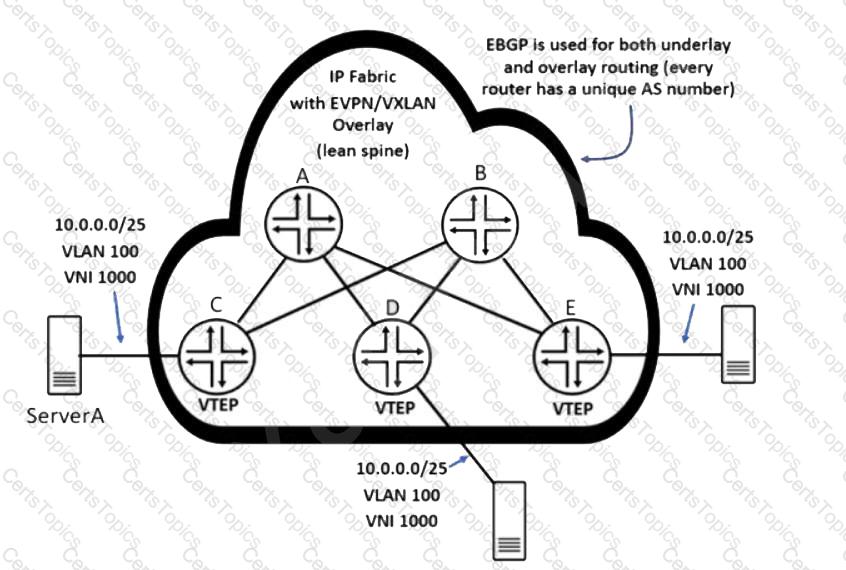You want to create an OSPF area that only contains intra-area route information in the form of Type 1 and Type 2 LSAs.
In this scenario, which area is needed to accomplish this task?
Your enterprise network uses routing instances to support multitenancy. Your Junos devices use BGP to peer to multiple BGP devices. You must ensure that load balancing is achieved within the routing instance.
Which two statements would accomplish this task? (Choose two.)
You are implementing the route summarization feature of OSPF.
Which two results do you achieve in this scenario? (Choose two.)
Which two multicast listener registration protocols are supported in the Junos operating system? (Choose two.)
You are deploying an 802.1X solution and must determine what would happen if clients are unable to re-authenticate to the RADIUS server.
In this scenario, which configuration would provide access to the network if the supplicant is already authenticated?
Your network has an unmanaged switch between the hosts and your EX Series switch. After the traffic enters the EX Series switch, each host must be on a separate VLAN.
How would you accomplish this task?
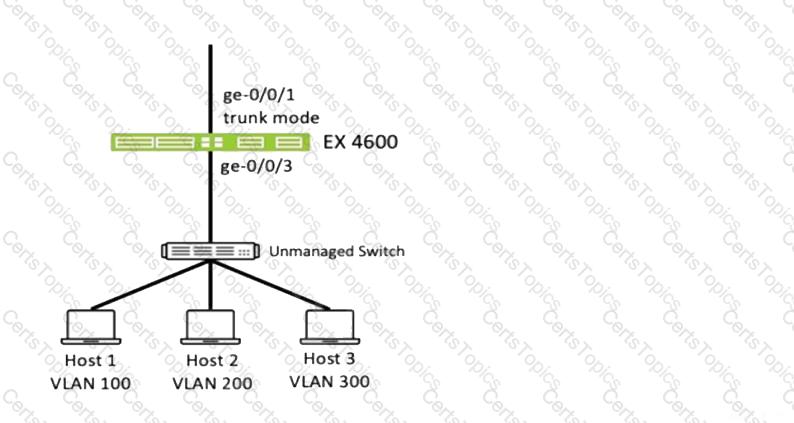
Your enterprise network is running BGP VPNs to support multitenancy. Some of the devices with which you peer BGP do not support the VPN NLRI. You must ensure that you do not send BGP VPN routes to the remote peer.
Which two configuration steps will satisfy this requirement? (Choose two.)
There are two BGP routes to 10.200.200.0/24 received from two external peers. Route 1 comes from a neighbor with a router ID of 10.10.100.1 and a peer IP address of 10.10.30.1, and route 2 comes from a neighbor with a router ID of 10.10.200.1 and a peer IP address of 10.10.50.1. Both routes have the same MED value, origin value, AS path length, and local preference number.
In this scenario, which statement is correct about the active route?
Referring to the exhibit, how will router E quickly learn that the remote MAC addresses are no longer reachable through the router attached to the failed link?
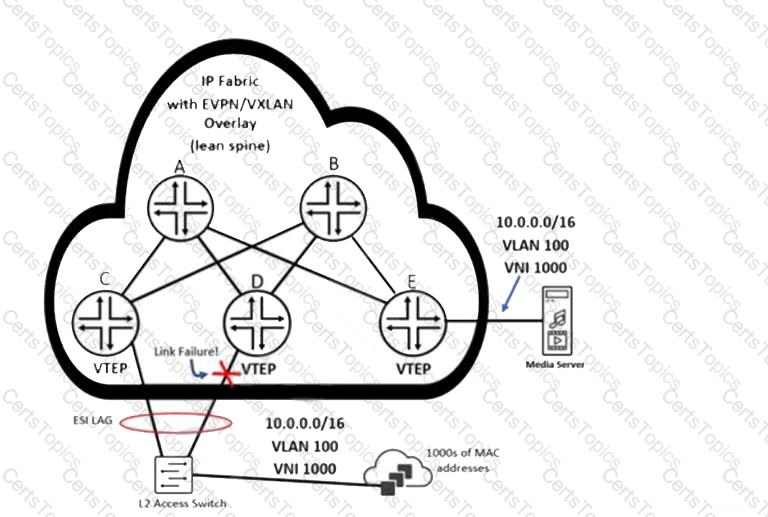
You are deploying new Juniper EX Series switches in a network that currently is using Cisco’s Per-VLAN spanning tree plus (PVST+) and you must provide compatibility with this environment.
Which spanning tree protocol do you deploy in this scenario?
You are using 802.1X authentication in your network to secure all ports. You have a printer that does not support 802.1X and you must ensure that traffic is allowed to and from this printer without authentication.
In this scenario, what will satisfy the requirement?
You are asked to implement fault tolerant RPs in your multicast network.
Which two solutions would accomplish this behavior? (Choose two.)
You are deploying IP phones in your enterprise networks. When plugged in, the IP phones must be automatically provided with the correct VLAN ID needed for sending voice traffic to the EX Series switches.
In this scenario, which two solutions are required to accomplish this task? (Choose two.)
Which two statements are correct about the deployment of EVPN-VXLAN on QFX Series devices? (Choose two.)
Which address range is used for source-specific multicast?
You are asked to establish full connectivity between all devices in the BGP network.
Referring to the exhibit, which two configuration changes will allow BGP route advertisements? (Choose two.)

Referring to the exhibit, a PIM-SM network is set up to enable communication between multicast devices.
Which two statements are true? (Choose two.)
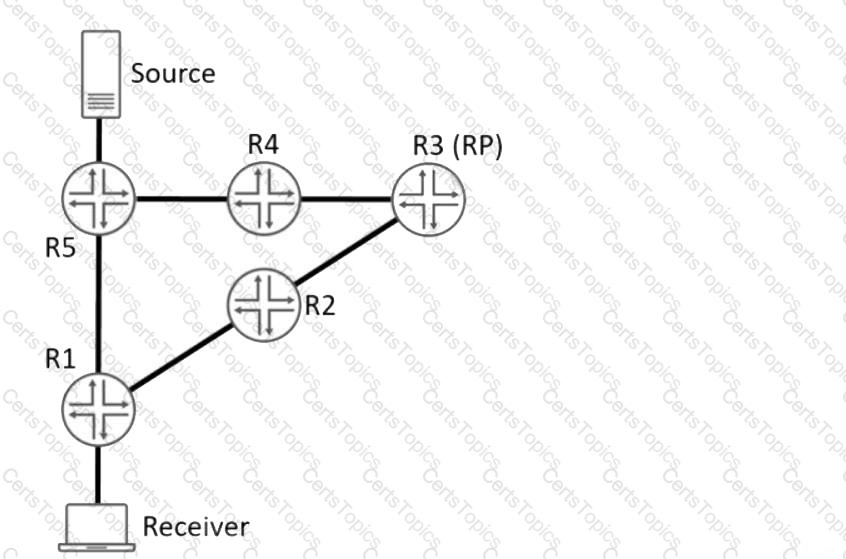
You are troubleshooting connectivity between an EVPN spine switch configured as a route reflector and a leaf node with an IP address of 10.30.100.6.
Referring to the exhibit, what is the problem?
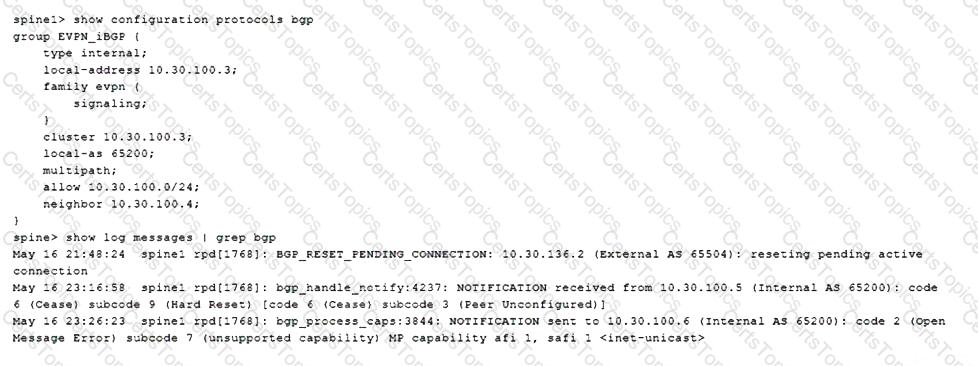
Referring to the exhibit, ServerA sends a single IP packet destined to 10.0.0.127.
Which two statements correctly describe the behavior of the resulting outbound VXLAN packets that contain the original packet destined to 10.0.0.127? (Choose two.)
